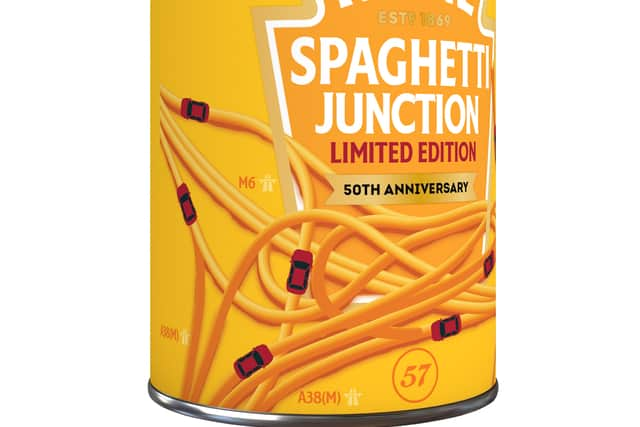Spaghetti Junction: when was Birmingham’s road interchange built, does it still exist, why is it called that?
and live on Freeview channel 276
It has been 50 years since the Birmingham Gravelly Hill Interchange was opened in May 1972.
The motorway junction that serves 18 routes took four years to build at a cost of £10 million and is used by 220,000 vehicles a day.
Advertisement
Hide AdAdvertisement
Hide AdCelebrated as being the centrepiece to the Midland Links project which connected motorways as well as bringing traffic to Birmingham, the junction appears in the Guinness Book of World Records as “the most complex interchange on the British road system” and has its own definition in the Oxford Dictionary.
Here is everything you need to know about the road system on its 50th birthday.
Where is the Birmingham Interchange and who opened it?
The Birmingham Interchange connects the M1, M5 and M6 motorways as well as the A38 (M) Aston Expressway, following the canal and river ways north of Birmingham City Centre.
It was built when old and new transportation methods were meeting, so builders had to allow horse-drawn narrow boats to travel beneath the 5-level elevated structure.


Advertisement
Hide AdAdvertisement
Hide AdCovering 30 acres, the landmark structure comprises 559 concrete columns and 175,000 cubic yards of concrete, and is designed to last 120 years.
The junction was opened by the 1972 secretary of state for the environment Peter Walker MBE , who declared the day as “the most exciting day in the history of the road system in this country.”
To mark the opening of the non-stop link between the North West and South East, the Lord Mayor of Lancaster at the time, Doris Henderson, presented a red rose for Peter Walker to wear at the ceremony for Spaghetti Junction.
In response, the Lord Mayor of London sent a bouquet of 243 roses to cllr Henderson for every mile between Mansion House in London and Lancaster Town Hall.
Why is it called ‘Spaghetti Junction’?
Advertisement
Hide AdAdvertisement
Hide AdDespite its proper name being the Gravelly Hill Interchange, UK citizens know the connecting roads and bridges as Spaghetti Junction.
The name was inspired when blueprints of the junction first appeared in 1965, three years before work started on the interchange.
At the time, a local journalist Roy Smith for Birmingham Evening Mail (now the Birmingham Mail) described the structure as a “cross between a plate of spaghetti and an unsuccessful attempt at a Staffordshire knot.”
From this, the name stuck for the roads as well as inspiring the lightboard on popular 1980s game show New Faces.
Advertisement
Hide AdAdvertisement
Hide AdIn 2018, Michelin-starred chef Glynn Purnell created a dish to celebrate the 50th anniversary of the start of construction on Spaghetti Junction called Truffled A38.
How is Heinz commemorating the 50th anniversary and what has been said?
Highways England has welcomed Heinz’s decision to create 500 limited edition tins to celebrate the motorway interchange.
The “fitting tribute” sees the re-creation of the M6 and A38 (M) roads on the product’s label.
The commemorative tomato pasta tins are available to buy from 23 May, being sold online on the Heinz to Home site for £1.50.


Advertisement
Hide AdAdvertisement
Hide AdNational Highways customer service director Melanie Clarke is excited for the celebration:
“It’s a fitting tribute to see Spaghetti Junction immortalised in - of course - a tin of spaghetti.”
“It goes to show the enduring appeal of the road 50 years on since it first opened to traffic.
“The structure is a real feat of engineering and it’s an iconic part of England’s motorway network which, from the moment when it first opened, really captured the imagination of the public and motorists.”
Comment Guidelines
National World encourages reader discussion on our stories. User feedback, insights and back-and-forth exchanges add a rich layer of context to reporting. Please review our Community Guidelines before commenting.
